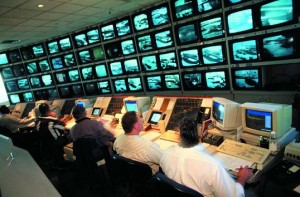 Hvem fortjener heder & ære og hvem fortjener 1/1 dg. Workshop av meg.
Hvem fortjener heder & ære og hvem fortjener 1/1 dg. Workshop av meg.
Vinner kåres bl.a. gjennom Twitter, facebook og LinkedIn; du kan påvirke resultatet!
Vinner er den virksomhet (offentlig, eller privat) som av Twitterfolk, facebook, linkedIn ( kommentarfelt her eller e post går også bra) har fått flest stemmer/anbefalinger i forhold til å ha fulgt flest av de råd tips som er gitt i Julekalenderen frem t.o.m. Julaften. Siden Vinneren allerede er god,vinner denne heder og ære!
Den virksomheten som du mener trenger å følge flere av mine råd får i “trøste” PREMIE en dags rådgivning av meg. Verdi omlag 15.000kr. eks. mva. Workshopen følger “Quick Win” metodikken som er beskrevet i blogginnlegget “Digitalstrategi kan være så mangt”
* Små skrift: Gjelder kun Norske selskaper. Jeg har ikke råd til å dekke evt. reisekostnader eller andre konkrete utgifter. Workshop kan holdes i Oslo eller kostnader dekkes av den som får premien. Jeg forbeholder meg retten til å ta egne valg, dersom det kommer inn for få forslag.
Altså twitterfolk (og kommentarfeltet gjelder) deres beskrivelse av:
Hvilken virksomhet er best til å følge mine råd vinner heder og ære (samt markedet) hvem mener dere det er ?
Hvilken virksomhet er dårligst og får en heldags workshop som Premie og muligheten til å bli bedre?
Innkomne forslag hittil :
Forslag til Best til å følge råd (kan vinne heder og ære):
Trondheim Kommune
Norwegian
Stormberg
AHO
Ventelo.no
Komplett.no
elkjøp.no
Forslag til Dårligst til å følge råd (Premie en dags workshop for å kunne bli bedre):
Google.no
Bokskya
NAV
RiksTV
Deal.no
Redmedia.no
eSea.tv
Ludo / Ludo
___________________________________________________
24.12
Folk trenger ritualer, skap dine!
Det er Julaften. La meg starte med å få ønske dere alle en fin og fredfull Jul! Ritualer har vært med mennesker til alle tider, i alle kulturer og i alle religioner. Har din virksomhet innarbeidede ritualer? Sannsynligvis har dere det, kanskje uten å tenke over at det er det det er.
Kanskje dere kaller det Kampanjer? Markedstiltak? DM, salgsaktiviteter? De fleste av disse har rituelle mekanismer som kjerne når de fungerer.
I dag har du kanskje ikke lyst eller tid, men en annen dag kan det hende at det å tenke over hva det er ved ritualer som gjør at det fungerer så bra, kan komme til nytte når du er tilbake på jobb.
Er det ikke noe med gjentakelse? Noe med at det er samlende? Noe med at det har glede, ettertanke eller et bestemt tema som vi samles om å gjøre? Noen ritualer handler også om å ønske å oppnå noe fremover.
På hvilken måte kan din virksomhet forsterke rituelle egenskaper som dine målgrupper vil ønske seg?
God Jul og Godt Nyttår !
___________________________________________________
23.12
Multikanalstrategi er ikke flerkanalstrategi
Begrepet multikanal stammer fra varehandelen (Retail) og handler om at forskjellige datasystemer utveksler informasjon og «status» i forskjellige prosesser. Fra før en kunde bestiller et produkt og gjennom hele produktets levetid er samtlige systemer oppdatert, slik at de forskjellige involverte har tilgang på oppdatert informasjon om hvor i kjøps- og «livsløpsprosessen» kunden er.
Om vi bruker bil som eksempel, vil leverandøren kunne tilpasse sine tjenester og yte service som er relevant for det stadiet kunden er på. Eks. kunden har prøvekjørt og kan få informasjon om spesialtilbud på ekstrautstyr,få informasjon om rabatter, lånemuligheter osv. Når bilen er bestilt, kan man via logistikksystemet få gitt salgsavdelingen beskjed om at det er oppstått problemer og leveransen vil bli forsinket, de kan da sende ut melding til kunden om dette og samtidig tilby leiebil i perioden fra lovet leveranse, til bilen faktisk blir levert. Det samme vil gjelde å avtale service på bilen til rett tid, tilbud på ekstrautstyr osv. (har kunden kjøpt skiboks, behøver man ikke sende ut reklametilbud om dette til denne kunden).
Markedsfolk har noen ganger ikke helt skjønt forskjellen mellom flerkanal og multikanal. Flerkanal betyr ganske enkelt at man etablerer en strategi hvor man benytter forskjellige reklamekanaler i optimal rekkefølge. Eks. DM og Nyhetsbrev aller først, Kinoreklame, før TV reklame, avisannonsering og boards samtidig. Reklame i uke- fagpresse sist.
Multikanalstrategi er først og fremst et effektiviseringstiltak både for leverandøren av tjenester og produkter og for kunden som kan få relevant informasjon på riktige tidspunkter. Det er svært nyttig i offentlig virksomhet, hvor saksbehandling og informasjonsutveksling etc. oppnår effektivisering og er vesentlig for å yte god støtte til oss som borgere hvor vi bl.a. slipper å gjenta oss selv til det kjedsommelige.
«Rett informasjon til rett tid er gull verd»
___________________________________________________
22.12
Kontekst, behov, adferdsstyrte tjenester og Geo- lokasjonstjenester.
Vi blir «bombardert av budskap.» Det sies at vi mottar mer en 3500 informasjonselementer hver dag. Ingen klarer å huske alle disse og vi filtrerer bort langt over 90%. Reklame er en av de formene for informasjon vi raskest filtrerer bort. Likevel er det ingenting som er så irriterende som akkurat når man trenger noe, at man ikke husker at det var noen som hadde en reklame om noe et sted, men hvor var det knalltilbudet når man trenger det?
I vår digitale verden blir det mer og mer mulig å formulere budskap rettet mot kun de som har et behov der og da. Amazon.com begynte tidlig å levere denne typen kommersielle budskap, men det er fortsatt kun i sin spede begynnelse. Google og Facebook arbeider også med dette- og det er ikke tilfeldig at reklamene på facebook er tilpasset hvilke søk du har gjort i Google, og at reklamene er tilpasset din sideprofil. De baserer seg på hvem du er, hvem dine venner er, dine interesser og hva du har gjort på din PC, eller mobil.
Når din virksomhet skal ut med informasjon bør man i større grad plassere budskap i riktig kontekst, vurdere løsninger som er mer tilpasset målgruppeprofiler slik at en lettere kan treffe folk som har et behov og er i en situasjon hvor de aktivt etterspør og ønsker å motta nettopp ditt gode tilbud. Ved å systematisere den informasjonen du har om eksisterende kunder (CRM systemet ditt og dialogverktøyene bl.a. sosiale medier) og utnytte denne kan du levere dine budskap til de som ønsker det, til de som er i en konkret situasjon eller på et gitt geografisk sted. Virksomheter bør stille sterkere krav til sammenkobling av informasjon fra de man kjøper IKT og reklametjenester av (mediebyråer, reklamebyråer, digitale leverandører osv.)
Det er også viktig å tenke på at det ikke bare gjelder kommersielle budskap, spesielt innen nettbrett og mobil vil behov og adferdsbaserte tjenester og Geo- lokasjonstjenester være attraktive tjenester. Ett eksempel er meg selv som seiler om sommeren. – Jeg ville likt å få meldinger om vær, havneinformasjon, mulighet til å bestille havneplass, bestille bord på restauranten ved bryggekanten osv. rett fra mobilen. Om jeg seiler forbi Moss, og noen i Moss kan sende meg relevante tilbud og fortelle meg at jeg burde stikke innom der, i stedet for en av nabohavnene, kan det godt tenkes at jeg faktisk ville satt pris på nyttige tjenester og til og med reklamen derfra, litt før jeg seiler forbi. Om det er mulig? Visst er det det, jeg har nautisk karttjeneste på min mobil allerede og jeg kan selv «tagge» informasjon der. Koblingen er enkel og jeg som bruker kan skru tjenesten «ekstra informasjon» av og på.
«Vær på rett sted med rett tilbud til rett person»
___________________________________________________
21.12
« Safe and sound? »
Jeg skal ikke si så mye om sikkerhet, det er det mange som kan mye mer om en meg. Men. Sikkerhet er flere ting – og jeg har merket meg at svært mange ikke helt forholder seg til de forskjellige typene « sikkerhet » og at for mange virksomheter overvurderer risikoen for «hacking» uten å tenke på at «hacking» langt fra er bare en ting.
- Fysisk sikkerhet- handler om å sikre sitt datautstyr, harware, software, programvare, applikasjoner etc. mot brann, vannskader, elektriske problemer, elektromagnetiske problermer ( solstorm) osv. Har din virksomhet gjort dette skikkelig? En anektode: En av norges viktige aktører håndterer vesentlige dokumenter og trenger et historisk arkiv. De hadde etablert et elektronisk fjernarkiv. Men glemte at hardisker trenger å bevege seg. De oppdaget for sent at all historisk informasjon var visket ut, fordi harddiskene ikke hadde beveget seg på mange år. (heldigvis hadde de fortsatt mikrofilm og måtte digitalisere alt dette materialet omigjen)
- Systemsikkerhet- handler om å sikre at de løsningene man har anskaffet seg kan erstattes, at de fungerer som de skal, at programvare, konfigurasjoner etc. er dokumentert og kan gjenopprettes av andre enn de som en gang arbeidet med det.
- Innholdssikkerhet- handler om at ditt innhold er lagret slik at om det blir borte (eks. ved at tredjepart går konkurs) ett sted har du en reservekopi ett annet sted, slik at du kan gjennopprette innhold som er blitt borte.
- Informasjonssikkerhet – handler om at den informasjonen du håndterer og den informasjonen du er ansvarlig for å publisere er korrekt, lovlig og etterettelig. Det handler også om at løsningene dine er sikret mot at sensitiv informasjon du eier, ikke kommer på avveie som følge av at andre utilsiktet får innsyn ( eks. at bruker/passord løsninger fungerer, eller at noen utilsiktet publiserer informasjon eksternt, som ikke skulle vært publisert)
- Sikring mot hacking – handler om flere ting. Noen ønsker å «prestere» å bryte seg gjennom din virksomhet for å bevise sin evne. Andre ønsker å ødelegge dine løsninger, ennå en gruppe ønsker å spionere og finne ut hva dere gjør og misbruke informasjonen til egen vinning, uten at virksomheten oppdager det.
Når det gjelder siste punkt, mener jeg at det ofte fokuseres for mye på å sikre seg mot hacking. For det første, er store deler av din virksomhets informasjon allmennkunnskap, dvs. den er ikke verd å bruke penger på å sikre. I store selskaper har man sett at over 80% av all informasjon og kompetanse, er allmenn. For det andre er deler av «resten» uegnet for de som forsøker å få tak i din virksomhets kritiske informasjon. Det tredje elementet er at den virkelig kritiske informasjonen og kompetanse din virksomhet besitter, som virkelig ikke bør komme på avveie (eks. Coca Colas hemmelige oppskrift) kanskje er langt billigere og enklere å få tak i på andre måter en datahacking. Tradisjonell spionasje, å betale ansatte, å “ansette seg”, å benytte trusler, lure folk i feller for så å bedrive utpressing vil i mange tilfeller være langt rimeligere løsninger rent økonomisk. Dvs. Når man skal tenke sikkerhet, er det langt flere enn IT avdelingen som må involveres!
«Vannet tar alltid minste motstands vei, slik er det også med utro tjenere »
___________________________________________________
20.12
Intet varer evig, heller ikke i «skya»
Når din virksomhet bruker Facebook, andre sosiale medier eller for den del andre skytjenester, er det svært viktig å huske på at ingenting varer evig. Det er uhyre viktig å opprettholde eierskap til eget innhold og egne tjenestetilbud. Husk også at ingenting er «gratis» det du gjør på eks. Facebook bidrar til at den virksomheten tjener penger på ditt bidrag, vei fordeler mot ulemper
Forsvinner en løsning, må du sikre deg muligheten til fortsatt å kunne drive virksomheten videre uforstyrret. Jeg gruer meg til å se meldingen: «You are not longer able to make use of this service». En dag vil WordPress, blogg.no, eller Google, Facebook og Twitter ikke lengre være blant oss, tro det eller la vær. Allerede i dag spekuleres det om «det frie internett» og indekseringssøk må «ofres» til fordel for nye løsninger og mer «lukkede markedstilganger». Ikke gjør deg sårbar og uten kontroll over egen virksomhet.
Samtidig er noen av disse tjenestene så egnet til å effektivisere/ møte/øke/sikre markedsandeler at du bør slettes ikke la vær å benytte mulighetene.
«Evig eies kun det tapte» Ibsen
___________________________________________________
19.12
Mobile first strategy
Det er fryktelig mye engelsk ute og går i den digitale verden, noe tittelen i dag viser. Det er rapporter som viser at mobilbruken (og bruk av smarttelefoner) øker så radikalt at svært mange virksomheter må revurdere sine strategier.
Lap top og web er ikke lengre førstevalget for mange, og mange ønsker å utføre handlinger/ fullføre kjøp via mobil. Mobiltelefonen er også blitt et redskap som brukes til mange ting, og den er først og fremst et svært «personlig» redskap. Man kan gjerne låne bort lap toppen ett øyeblikk, men låner ugjerne ut mobilen sin. Mobile first handler ikke bare om mobiltelefoner, det handler også om nettbrett. Dette er to forskjellige «dingser», det er også to forskjellige kanaler. Alle er blitt kjent med «apps», det er spissede tjenester som løser et spesifikt problem og ikke mer enn det. Det vil også komme flere mer generiske tilbud til forbrukerne, som betalingsløsninger osv.
Uansett vil mobilløsninger største fordeler være at de er rettet mot individets behov. De behovene er situasjonsbetinget. Jeg velger «dings» og kanal, basert på i hvilken situasjon jeg er. Der det er lettere å bruke mobil, eller nettbrett, vil jeg velge det foran å dra opp laptoppen min og utføre en handling der. Det bør man tenke på når man utformer løsninger for mobil og nettbrett.
« Møt meg der jeg er, med en løsning på det problemet jeg har her og nå»
___________________________________________________
18.12
Webben vil ikke løse alle dine problemer
Ofte når vi snakker om digitalstrategi tenker vi på internett og web. Front-end og ” overflaten” får mye oppmerksomhet. Det er litt som å bedømme en bil etter karosseriet alene. Det er teknologien som skaper fremdriften og sjåføren som bestemmer retningen når vi snakker om en bil. Digitale løsninger er likedan.
Bak suksessfull digitalstrategi ligger det vesentlige forutsetninger i forretningsdrift, organisasjon og teknologi. Når offentlige tjenester tilbyr selvbetjeningsløsninger og søknadsportaler, består det også av bakenforliggende teknologiløsninger og organisasjonsendringer. Med godt brukergrensesnitt og godt design på toppen lettes borgernes kontakt med byråkrati. Staten oppnår bruk av offentlige midler effektivt. Når eksempelvis telecomselskaper investerer i tung infrastruktur bygges samfunnet i en retning som gir oss alle likeverdige muligheter til å kommunisere, drive forretning og få tilgang til informasjon og kompetanseutveksling.
Ved å bruke de digitale mulighetene optimalt kan virksomheter tilby ansatte fleksible arbeidsmåter og tiltrekke seg kompetansemiljøer som tidligere ikke var mulig. Har din virksomhet lagt til rette for at du som arbeidstaker kan samhandle effektivt og få tilgang på interne dataverktøy og informasjon nødvendig for å kunne løse dine arbeidsoppgaver effektivt?
«Ingen ville finne på å putte en strikkmotor i en Ferrari! »
___________________________________________________
17.12
Når alt er blitt «Commodity» trengs du ikke lengre da?
Det engelske ordet oversettes med «handelsvare». Det brukes ofte i sammenheng med at man ikke lengre har et konkurransefortrinn; det er blitt «commodity» altså noe alle har, eller kan skaffe seg lett. Når mye av din virksomhets kjerneaktiviteter kan gjøres av hvemsomhelst, hva skal sikre at din virksomhet har livets rett da?
Problemstillingen er aktualisert i en digital verden fordi alt blir lett svært lett tilgjengelig. Da gjelder det å finne noe som ikke kan erstatte din virksomhet. Det «unike» snakkes det ofte om. Dersom dine produkter eller dine tjenester lett kan gjøres av andre, må du finne ut hva andre ikke lett kan kopiere i din måte å gjøre det på.
– Det er kun Bob Dylan som kan levere sitt innhold på sin måte, det er ikke lett å kopiere. Man kan laste ned hans musikk, men man kan ikke laste ned hans konsertopplevelse.
Slike ting bør man lete etter. Kanskje det er kundeopplevelsen du kan skille deg ut med og være mye bedre på enn alle andre?
«Lever topp kvalitet og etabler tette relasjoner»
___________________________________________________
16.12
Har du vært på Workshop? – eller var det et fordekt «møte»?
Var den «workshopen» egentlig et møte? Hva er forskjellen på et møte og en Workshop? Spissformulert kan man si at en workshop er en lengre arbeidsøkt mellom flere, når man ikke vet hva man bør gjøre, mens et møte er mest effektivt når en skal diskutere hvilke valg man bør ta og hvordan iverksette beslutninger.
Workshop betyr ikke kun å henge opp «gule lapper» på tavla. Det er ikke noe galt med gule lapper, men det finnes mange flere egnede teknikker for å drive en workshop og få fram kreative ideer og mulige løsninger på problemstillinger. Her nevnes noen workshopmetoder/teknikker/øvelser jeg har erfaring med (Med noen stikkord på hva jeg har opplevd som fordeler ved de enkelte. På langt nær utfyllende, men til inspirasjon for noen av dere?):
- Ut av boksen tenkning – flytte synsvinkel, oppdage nye muligheter
- Brainstorming workshop – få frem mangfold av ideer
- Business process reengenering – finne alternative veier å levere merverdi på
- Kaizen – bygge varige endringer over tid
- Seks tenkehatter – utfordre fastlagte tankemønstre
- SWOT – Analytisk tilnærming på en problemstilling
- Benchmarking – sammenligninger og valg av plassering i et «landskap»
- Scenarioworkshop – konsekvensvurderinger
- «War room» workshop – skape kunstige kriser for å fremme nye beslutningsmuligheter
- Incentive workshop – positiv involvering og «gullerot» prinsipp for å få frem løsninger
- Lego Serious Play – dybdeforståelse og kompleks problemløsning
Å ta et kurs i workshopledelse er en veldig god ide, fordi det ikke er en mekanisk øvelse å fasilitere workshoper. Det krever pedagogiske evner, det krever at man er glad i å hjelpe grupper og forskjelligartede personligheter. Det krever å redusere sitt eget ego og styrke andres.
Kunnskap om workshopmetoder og kompetanse på fasilitering av slike er viktig sett i sammenheng med digitalstrategi fordi digitalisering for de fleste virksomheter handler om endring.
«flere hoder tenker bedre sammen- enn ett og ett»
___________________________________________________
15.12
Skap en kontinuerlig innovasjonsprosess
Før kunne man slå seg til ro med at man hadde funnet en formel for sin virksomhet. Man kunne hugge den ut i sten og beholde den i noen tiår. I dag er verden så omskiftelig at det er en farlig holdning. Innovasjonsevne kan med den digitale utviklingen være et «vinn eller forsvinn» for din virksomhet. Minimum hvert halvår vil sannsynligvis forutsetninger ha endret seg også for din virksomhet. Følger dere med internt og eksternt kan dere utnytte dette, til beste for kundene deres. «Innovasjon» er blitt et moteord. Ikke fall for «billig hype», gjør et skikkelig arbeid.
Finn ut hva slags innovasjon dere trenger: Kontinuerlige forbedringsprosesser, eller radikale endringer, produkt eller tjenesteinnovasjon? Med stor sannsynlighet besitter egen organisasjon all kompetansen, evnen og viljen til å skape resultater av innovasjonsprosesser. Ekstern støtte kan bidra til å utnytte potensialet. Synliggjør og nyttiggjør ledelsen i din virksomhet dette?
Innovasjon er ikke et prosjekt man setter i gang og så avslutter etter et par workshoper. Det er en kontinuerlig prosess. Rekk opp handa; hvem av dere har systematisert innovasjonsprosesser i egen virksomhet? Noen få har, men det er ikke mange. Det gir dere muligheter til markedsforsprang!
Les gjerne regjeringen.no sin veileder om medarbeiderdrevet innovasjon!
«Innovasjon handler ikke om å finne opp kruttet, det handler om å bruke det på rett måte, rett sted og til rett tid»
14.12
Pass deg for hva du måler!
Det er et digitalt målehysteri der ute. Alt kan jo måles. Mange kobler feil i hodet sitt når målinger skal styre hva som er «suksess» Det heter SEO, SEM, Målstyring, Scorecard, Konverteringsrate og jeg vet ikke hva! Måling har mange navn. Det verste er at det er viktig!, men…
Eksempelvis kan man måle hvor lenge en bruker er på et nettsted. Men er det nødvendigvis bra å være lenge på et nettsted? Hva om brukeren får løst sitt problem/ dekket sitt behov hurtig, er det da negativt at det tok kort tid? Hva om brukeren er der kort tid – uten å få løst det de kom for, er det bra? Antall treff, konverteringsrate etc. gir bare bra målinger om man vet hva man skal bruke svaret til. Vet du hva du måler?
«Hvis du ikke vet hva du skal bruke svaret til – ikke spør! »
___________________________________________________
13.12
Hva kan du gjøre med «Crowdsourcing»?
Nok et ‘hipt’ ord, men hva er det og fungerer det? Det er masse litteratur, foredrag og meninger om hva fordelene er. Det kommer ikke av seg selv og er det noe folk oppdager fort, er å bli utsatt for å ha blitt «brukt» – så mitt råd er å gjøre hjemmeleksen før man kaster seg ut i det.
Å få tilbakemeldinger, hjelp til å forbedre tjenester og produkter er noe folk gjerne vil hjelpe deg med – men bare om du er etterrettelig og skikkelig. Jeg har hørt næringslivsledere uttale (ja- i 2011! om bruk av sosiale medier): « Det er ikke dere som bruker meg, det er jeg som utnytter dere!» – Det er lett å tolke kynisme inn i dette og folk flest vil ikke bli utsatt for den slags kynisme.
Crowdsourcing kan gi enorm effekt, fordi man har tilgang på potensielt svært mange, veldig motiverte og dyktige mennesker samtidig. Idemyldring og konkrete forslag kan komme i stort antall og veldig hurtig. Problemer kan løses fort og man har større treffsikkerhet mht. å treffe reelle (markeds)behov – om det er gjort riktig. Innovasjonsmiljøer, forskningsmiljøer, gründerbedrifter er bare noen få eksempler på hvem/hvordan bruke Crowdsourcing.
Ett konkret- og ikke komplekst eksempel er –Stormberg– som har spurt folk om input til produkter de ønsker seg, forbedringer ved produktene og designforslag. Husk endelig å gi skikkelig tilbakemelding til alle som bidrar, det er ikke gjort riktig før du leverer mer til de som hjalp deg, enn den innsatsen de ga deg!
«Desto mer du gir, desto mer får du tilbake»
___________________________________________________
12.12
Hva skal virksomheten din leve av i fremtiden?
I en digital verden finnes det ingen praktiske grenser for å levere et uendelig antall av eksempelvis innhold. Nå blir stadig større deler av tilbudene i digitale universer «gratis» eller sagt på en annen måte; kostnadene ved produksjon og kopiering blir tilnærmet gratis for en stadig økende del av produkter og tjenester. Tenk bare på fotoalbumet: Skulle noen få en kopi av familiebildet ditt, måtte du kjøpe hver kopi. I dag sender du en e post, eller har lastet opp bildet på Flickr som kan lastes ned i det uendelige.
Det blir en stadig større utfordring å få betalt og det å kunne skape et overskudd på samme måte som før.
– Når Facebook gir bort tilgangen til deres enorme (og utviklingsmessig kostbare) nettverksplattform til alle som vil være der, Google gir bort tjenesten søk og det at vi kan finne mer informasjon på noen tidelssekund enn det ville ta oss å lete frem i all verdens biblioteker, da er det fordi de tjener penger på det som er «bortenfor gratis». De har funnet andre måter å tjene pengene på, og det er slettes ikke bare annonseinntekter, som mange synes å tro.
Det vil for mange virksomheter være helt avgjørende å finne måter å levere merverdier, utover det du kan (måtte) gi bort (til)nærmet gratis i relativt nær fremtid.
«Pass på at dine verdier, bortenfor «gratis» ikke kan kopieres»
___________________________________________________
11.12
Ingen tror på sjefen!
Hopp over sjefen som vises frem og forteller om hva bedriften gjør og hvor flinke dere er. Folk tror mer på fagfolkene i virksomheten enn lederne. La de som kan faget i bedriften formidle kunnskapen om metodikk, produkter og tjenester. Undersøkelser underbygger dette. Ledere bør derimot fortelle om virksomhetens mål, kultur marked og ledelse.
« Den digitale virkelighet er transparent, stol på dine ansatte»
___________________________________________________
10.12
Folk er lei «Corporate design»
Det er millioner av nettsteder med de samme typer bilder og «striglet» kjedelig visuelt design. Det visuelle språket er viktigere enn teksten! Still krav til fagfolkene som hjelper dere og lag løsninger som overrasker. Webløsningen din er et godt utgangspunkt, men «mobile first» er begrepet som blir dagligdags i løpet av 2012. Mobile løsninger og nettbrett har ubrukte muligheter, bruk dem, lek og utforsk – ikke lag «brosjyrer» på nett. Nettbrett har muligheter til multimediale fortellinger som ennå ikke er fortalt. Men husk, vær relevant! Ikke fjern folk fra fokus, ikke dra oppmerksomheten vekk fra kjernevirksomheten.
«Et bilde forteller mer en tusen ord, vær nøye med ditt visuelle språk og kvaliteten på de nonverbale opplevelsene du gir!»
___________________________________________________
9.12
Ingen er interessert i «nyheter» om virksomheten din.
Mediebransjen er mye bedre til nyheter enn din virksomhet. Dropp nyheter med mindre du driver i mediebransjen. Fokuser på å formidle kjernevirksomheten og de andre tipsene jeg har vist her. Det er langt bedre at andre skryter av deg, enn at du skryter av deg selv. Om det skulle være viktig å ha med «nyeste kunder» plasser det et sted hvor folk som virkelig vil vite det kan oppsøke det. Hvorfor ikke linke til andre som omtaler din virksomhet? Aktiviteter folk kan tjene på å delta på, sammen med deg derimot, det er mye bedre. Skap engasjement om din virksomhet, ved å gi de som er interessert i hva dere kan noe de kan dra fordeler av.
« Det er bare dere som ser dere selv innenfra, alle andre ser dere utenfra»
______________________________________________________
8.12
De enkle ting er ofte best
Det er vanskelig å si komplekse ting kort og lett. Gjør det likevel.
Keep It Simple Stupid! K.I.S.S.
______________________________________________________
7.12
Hva i *** gjør du på facebook?
Sosiale medier er «hot» men vet du hva du gjør der? Eller er du der bare fordi sånne som meg har sagt det? I sosiale medier må man følge spillereglene, mange av dem uskrevne. Det er relasjoner, det er dialog, det er å ta samtaler på alvor. Forskjellige sosiale medier er bra på forskjellige ting. Velg steder å delta med omhu. Husk også at vi er i ferd med å bli vant til å være deltakere i sosiale medier, det er snart en «attributt» og ikke noe i seg selv. Samstem aktivitetene med kjerneaktivitetene i virksomheten. Samtidig er det viktig å være integer, åpen og by på seg selv, akkurat som i alle andre relasjoner.
Lytt gjerne til erfarne ‘digitalfolk’, ikke bare konsulenter og leverandører, men også andre som driver virksomheter. De har gjort feil din virksomhet ikke behøver å gjenta. De har skapt suksesser du kan lære av. Se eksempelvis hva Stjørdal kommune har gjort på facebook og hvordan de har tenkt.
«Vær ikke ett i dag, i går, og noe annet om et år. Det som du er, vær fullt og helt, og ikke stykkevis og delt.» Ibsen
______________________________________________________
6.12
Våg å endre premissene for hvordan dere produserer og leverer
Det er slettes ikke sikkert at den forretningsmodellen dere har hatt, er den som nå passer best for folk som vil handle med dere. Kanskje folk ønsker å handle med dere på nett, eller betale via mobil? Markedet modnes raskt. Sjekk om dere kan gjøre noe annerledes hvert halvår. Ja, hvert halvår – for mange av dere!
Business modelling canvas er et redskap for å gjennomgå og finne forbedringspotensial. Utviklingen i nettverksøkonomien i (digitaløkonomi) er så rask at det kan være helt avgjørende for å være attraktiv i markedet.
Offentlig virksomhet er ikke unntatt, vokabularet er kanskje forskjellig men sluttsummen den samme: Å være mest mulig effektive internt og tilby størst mulig verdi for brukere/ kunder eksternt. I de nedgangstidene vi har foran oss vil vårt samfunn være avhengig av en offentlig forvaltning som gjør oss effektive.
Kanskje er det lurt å levere forskjellige produkter og tjenester i forskjellige kanaler? Kanskje kan dere spare på å distribuere annerledes? Kanskje kan dere tjene mer på å ta betalt på andre måter? Tjener dere på å senke prisene og øke volum? Hva med å utvide produkt/tjenestespekter? Inngå samarbeid med andre som leverer tilstøtende produkter/ tjenester?
«Det gjelder å tenke seg om fort to ganger – og agere enda fortere! »
______________________________________________________
5.12
Lar du folk fortelle deg hva de mener?
Det kan være sårt å høre fra kunder som mener din bedrift ikke gjør en god nok jobb. Men er det egentlig det? Tilbakemeldinger er egentlig av stor verdi for virksomheten din. Lar du den verdien gå til spille?
Du kan snu negativ tilbakemeldinger til: Nye og bedre produkter/ tjenester, forbedret kundeservice, bedret kommunikasjon, bedre synlighet på nett, hjelp til å være i rette kanaler osv. Alt dette er veldig komplisert og kostbart for din virksomhet å finne ut av på andre måter. Når dine kunder klager, er de engasjerte og vil egentlig gjerne hjelpe deg – om du lar dem!
Inviter til dialog i alle de digitale kanalene du treffer din målgruppe i.
Ta vare på alt du lærer og etabler et internt system som fanger det opp, foredler kunnskapen og iverksetter tiltak.
Takk for kritikk og vær takknemlig for hjelpen du får.
______________________________________________________
4.12
Det er bare du som selger / formidler noe, alle vi andre kjøper / ettersøker noe
Folk er ikke særlig interessert i hva du vil. De er interessert i hva de selv vil. Forstår du hva din målgruppe ønsker hos deg? De som forstår dette bedre enn deg har flere kjøpere en du har. For å finne ut av dette må du ha innsikt i hva folk anser som fordeler. Det får du ikke kun ved å analysere besøksstatistikk, SEO aktiviteter eller konverteringsmålinger, men ved også å benytte kvalitative undersøkelsesmetoder (som etnografiske, sosialantropologiske og sosiologiske metoder) – spørre og observere hva folk gjør og tenker med andre ord.
På den måten kan vi si at produkter og tjenester kun er «bærere av fordeler». Det er først når du har innsikt i forbrukernes ønsker og behov at det gir reell verdi å vurdere om du skal endre på selve produktene eller tjenestene du tilbyr. De fleste «Innovasjonsprosesser» som går feil har hoppet over å forstå kundene og forsøkt å endre produkt/ tjenester for tidlig i prosessen.
Det tredje vesentlige elementet i å nå frem til dine målgrupper er kommunikasjon. Dersom du ikke kommuniserer de fordelene dine produkter/tjenester er bærere av, vil ikke folk forstå hvorfor de skal vurdere om det vil løse deres problem / behov. Disse tre elementene er like viktige for å kunne tilby verdi til din målgruppe.
«Det er bare jeg som tenker på meg, alle de andre tenker bare på seg»
______________________________________________________
3.12 a)
Hva Koster det?
Fortell målgruppen hva dine produkt/ tjenester koster. Det kan være pris, tid eller innsats. Det er ikke alltid man tilbyr noe som har en (fast) pris. Poenget er at den som har et problem og eller et behov som din bedrift kan bidra til å løse/dekke, trenger å vite noe om hva som skal til. Igjen – si det som det er, enkelt.
Vis folk at det er viktigere å se på hva man tjener / sparer ved å kjøpe, enn å se på utgiften for å oppnå det.
______________________________________________________
3.12 b)
Hvordan får jeg tak i det?
Fortell målgruppen: Hvordan finne produkt/ bestille tjeneste/ egen ‘apps’/ kontakte for mer informasjon. Har du kart til butikken/ kontoret ditt, åpningstidene, adressen, , telefon og e post, (til salg-/produktansvarlig) kontakt til twitter/ facebooksider osv. synlig på forsiden/ landingssider?
Dersom det du tilbyr kan selges over nett eller enda bedre – via lesebrett eller mobilen – gjør det!
Og du? Det er selgerne som har ansvar for salg – også i digitale kanaler, er det ikke? (Webredaktører bør få utøve yrket sitt som er kommunikasjon og kompetanse på digitale løsninger og ha ansvaret for dette, ikke alt mulig annet!)
Gi mange alternativer til å kjøpe og mange alternativer til å bestille, betale og kontakte. Folk som kan velge hvordan, velger lettere din virksomhet.
______________________________________________________
2.12
Hva driver dere egentlig med?
Fortell først målgruppen hvilke problem dere kan løse for dem og hvilke behov dere kan dekke. Fortell dette i korte og enkle setninger. Det er overraskende å se så mange nettsider anno 2011 (daglig) som ikke besvarer dette først. Husk også å si det i et språk de som besøker dere forstår. Nina Furus eksempel: «Ilsted» er feil, «peis» er det folk søker etter.
Fortell hvilke fordeler kjøper/mottaker/samfunn har.
Folk liker bedre et selskap som ikke bare er opptatt av å øke egen profitt, men som vil gjøre noe godt for deg/andre/samfunnet.
______________________________________________________
1.12
Det er ikke alltid du kan snakke deg ut av et dårlig omdømme
Man kan si at «du er hva du gjør- ikke hva du sier.» I en digital verden hvor kommunikasjon er relasjonell betyr det at folk snakker om din virksomhet, enten du liker det eller ikke. Omdømmet forsterkes hurtig, både positivt og negativt ladede dialoger.
Ofte må ord følges opp med (mulighet til) handling. Kan dine tjenester/produkter kjøpes, bestilles, lastes ned, melde seg på aktiviteter osv. i en eller flere av din virksomhets digitale kanaler? – eller er det enklere for dine kunder/brukere å kritisere dine løsninger på twitter og heller handle hos dine konkurrenter?
Sosiale medier er en stadig viktigere arena å delta på. Det er viktig å være klar over hva samtalen om din virksomhet er, for å kunne rette opp negative inntrykk med faktaopplysninger.
«Det er ikke nok å rope hallelulja, man må gjøre det!»
______________________________________________________
 It’s the giants leading on the battle; it amazes me that the rest of us let them rule the ground alone.
It’s the giants leading on the battle; it amazes me that the rest of us let them rule the ground alone.














 Perhaps content isn’t the future value for the media business. Perhaps the real value is the knowledge and management of users / participants and their behavior. We believe the media industry as a whole has already been subjected to “Disruptive Innovation” and the only way to survive in the industry is to adapt very quickly. The main point is to create added value for the sum of buyers in the digital universe, through business models that also provide revenue to media houses. The most important prerequisite for success in this is to have the right combination of business strategy, organization, competence, and not least technology platforms, that can realize the goals
Perhaps content isn’t the future value for the media business. Perhaps the real value is the knowledge and management of users / participants and their behavior. We believe the media industry as a whole has already been subjected to “Disruptive Innovation” and the only way to survive in the industry is to adapt very quickly. The main point is to create added value for the sum of buyers in the digital universe, through business models that also provide revenue to media houses. The most important prerequisite for success in this is to have the right combination of business strategy, organization, competence, and not least technology platforms, that can realize the goals 

 Amazon.com
Amazon.com











